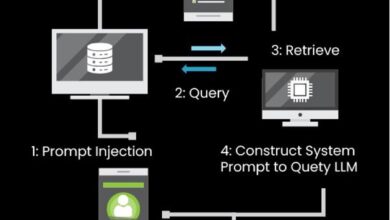
Millions are scammed online each year. It’s critical that cyber defenses get stronger. The Cyber Defense Review highlighted improving strategies against scams. This blog teaches you to spot and avoid fake websites to be safer online. Phishing is a huge threat. Cybercriminals trick people to get private info. Attacks look real posing as trusted sources. So people give login details, and financial data, exposing themselves to fraud and theft.
Scammers make attacks super tricky these days. They look exactly like the real companies and organizations we know. The goal is to get our confidential information to misuse later. Once we share passwords, account numbers, or personal details unknowingly, they exploit us. Phishing causes identity theft, unauthorized purchases, and other malicious activities. The consequences impact victims financially and emotionally.
How Phishing Evolved
Phishing techniques advanced since starting in 1995. Cybercriminals moved from simple emails to building fake sites and tricking people into share private details. This shows phishing evolving, as attackers bypass security measures. Experts then developed countermeasures against fake identities after coining “phishing.” It’s a constant cat-and-mouse game needing vigilance.
Phishing Scam Dangers
Scammers use phishing to steal sensitive info like your ID, bank details, and passwords. It often starts with a fake email or text that seems real. Phishing scams trick people. Criminals make fake websites that seem real, like banks or social media sites. They send emails or messages with links to these sites. When someone clicks the link, the fake site looks just like the real one.
Then, they get you to type in your passwords, credit card numbers, or other private info. This allows identity theft and stealing your account access. Businesses face big risks too – stolen customer data and reputation damage. Security experts warn phishing crimes are getting worse for people and companies. Anti-fake website protection plays a crucial role in combating these scams and safeguarding individuals and businesses from falling victim to phishing attacks.
The Phishing Process In Detail
Cyber criminals make websites that look exactly like real ones – banks, social media, emails. These fake sites are designed to steal your info. They look and feel just like the real sites you trust. If someone lands on one of these fake pages, the site tricks them into typing sensitive details like passwords, card numbers, and social security details. This leads straight to identity theft.
The attackers use urgent emails, texts, or ads to lure victims. They create fake situations that need quick action – like a blocked account or fraud alert. This makes people click the link to the criminal’s data-stealing site. Unsuspecting victims fall for these deceptive pages made just for data theft. Cybercriminals love phishing because it’s simple yet very effective for harvesting valuable personal information.
Anti-Fake Website Solutions
Fake websites are a big problem. They can trick people into thinking they are real. This is very dangerous for people online. That’s why we need strong anti-fraud tools. These tools use smart computer programs to spot fake websites. They look at how the website acts and other data. This helps them tell if a site is real or fake.
The anti-fraud tools use machine learning and big data. Machine learning means the programs can learn and improve. Big data means they look at lots of information. By using both, the tools get smarter. They keep updating to stop new tricks from fake websites. This helps keep people safe when they go online.
What Makes Anti-Phishing Tools Great?
Good anti-phishing tools have super cool ways to find fake sites. They use AI and machine learning to catch bad guys before they cause trouble. Real-time detection is key – it spots sketchy websites or links right away.
Mimecast stops mean emails and files from even reaching you. Cloud email security also blocks suspicious messages, keeping you safe.
But these tools don’t just protect emails. They also fight malware, keeping you fully covered from phishing.
The Best Anti-Phishing
The top anti-phishing tools use machine learning to analyze threats. They have awesome real-time detection powers against cyber attacks like phishing and malware. They check every message for danger, protecting you instantly. Security isn’t just about data anymore – it’s email safety and finding fake sites too.
Teaching people about phishing is super important too. After learning these rad tools, we must spread awareness on spotting and avoiding phishing scams. Preventing cyber dangers requires using multiple techniques. This ensures comprehensive protection keeps people and organizations secure online.
Educating Against Phishing Threats
Education plays a crucial role in fighting phishing threats. Companies provide security training, teaching teams to identify fake emails and websites. They learn how to avoid falling victim to scams. Learning about email threat intelligence is also vital.
Guidance enables businesses to defend themselves without disrupting operations. They stay informed on phishing trends, learning the best protection methods for themselves and clients.
In conclusion, protecting against fake websites demands constant vigilance, utilizing smart tools. Cyber defenses strengthen with each update in anti-phishing technology and education efforts. Insights from experts like Mandiant, Cyber Defense Review illuminate effective strategies. Detecting fakes before harm occurs is key to digital safety. Collectively, we build a safer internet gradually, and carefully.




